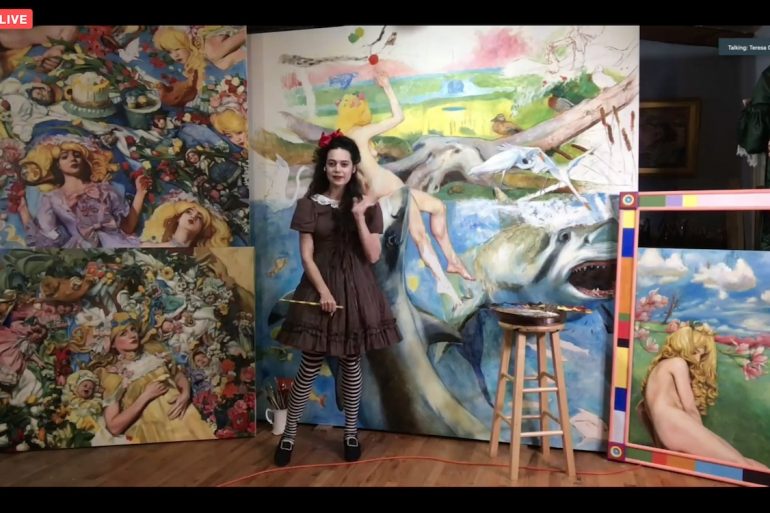
This post is also available in:


It’s Jeffrey Olson, director of arts education at Royal Talens -North America Section- who opens the second day of Realism Live.
Realism Live is the world’s largest event, conceived by Eric Rhoads and Peter Trippi, dedicated to contemporary realism in all its forms and mediums. Hundreds of participants from over twenty-five countries around the globe connect virtually at all hours of the day and night. Participants not only get to know the great teaching artists, but also interact with each other thanks to moments designed specifically to promote knowledge and cultural exchange, including: two daily ‘breakout rooms’ and the “paint along/cocktail hour” after the day.
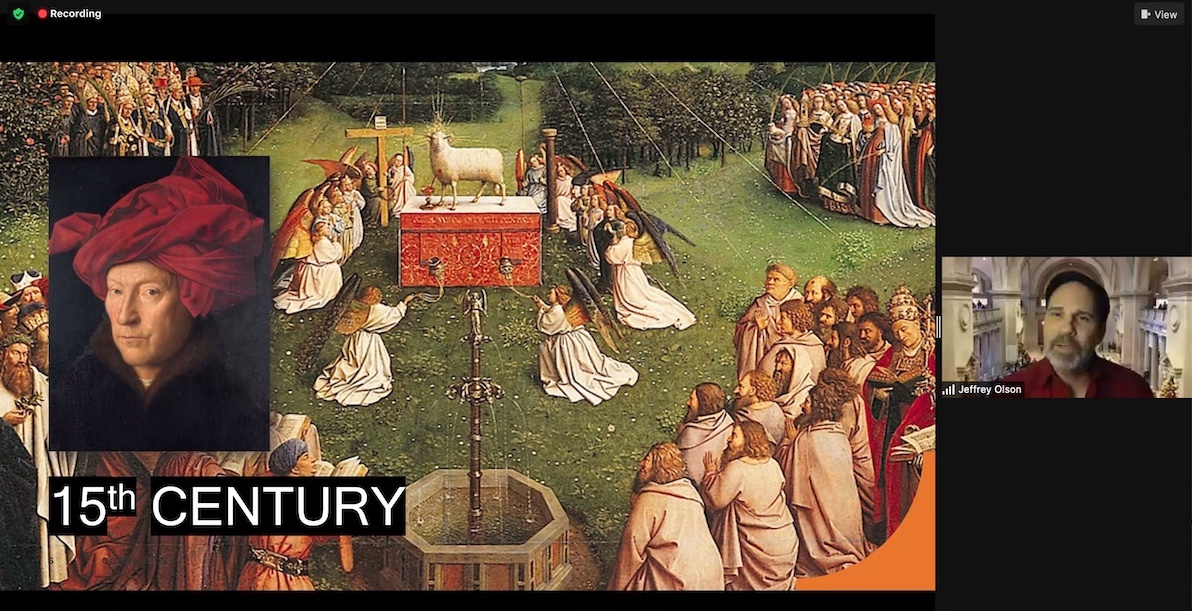
Live from the Metropolitan Museum of Art, in NYC, Jeffrey Olson covered “The Alchemy of Oil Painting”, a very interesting informative session. Recounting the history of oil painting from its origins, he provided important technical information about: pigments, binders, grounds, auxiliaries, oils and mediums.
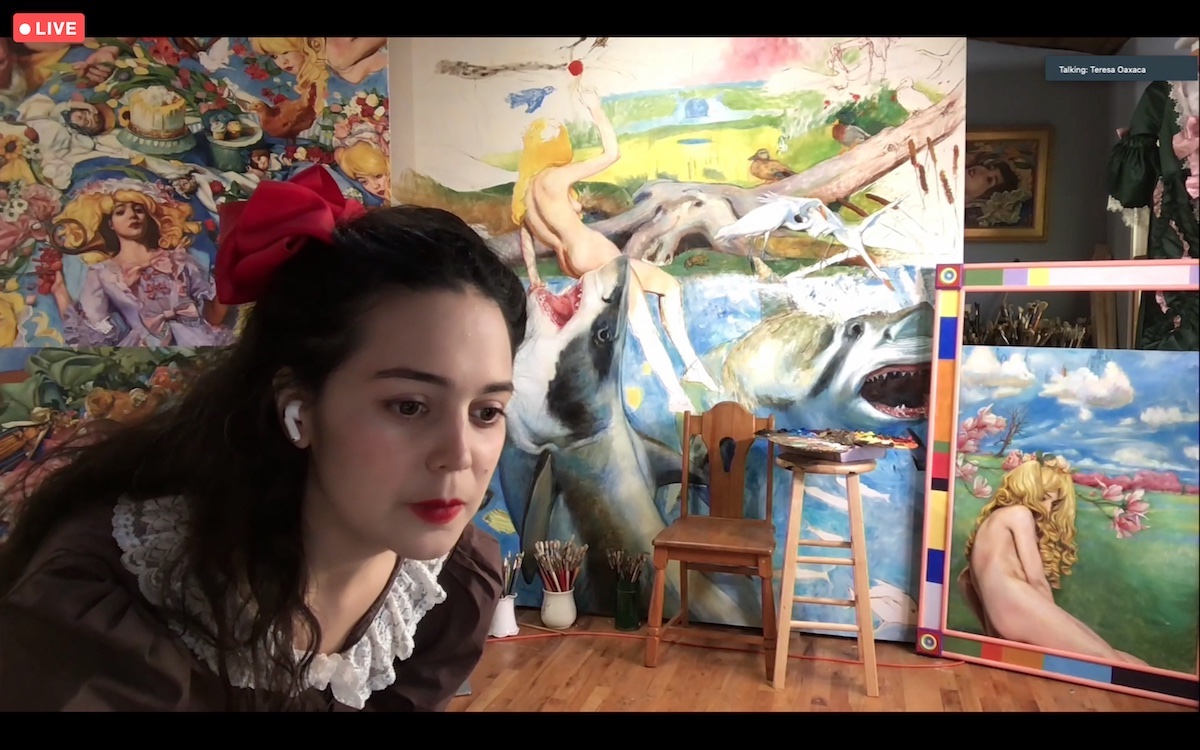
“What drove me to become an artist is that art, with its timing, allows me to procrastinate,” says Teresa Oaxaca, a graduate of the Accademia di Firenze, Italy, with a laugh. Teresa Oaxaca, is an artist who needs no introduction and does not go unnoticed. In fact, her human and pictorial authenticity allows her to live in a work of art: she seems to have come out of a painting with her baroque-style clothes that project her into a space-time faithful only to herself and her artistic nature. Oaxaca, who usually works on large dimensions, uses linen and personally creates very saturated colors. Another peculiarity of the artist is that she personally creates -as she learned from the artistic inspiration of her father, who used to stretch her canvases, and from the great Italian artisans- her own frames, offering a further added value to the already wonderful works. Oaxaca, as Graydon Parrish did yesterday, attended throughout the second day of the convention, working on her largest canvas. In the work being finished, a portrait of a female nude is accompanied by sharks, animals and trees that harken back to her childhood and the enigmatic “Triptych of the Garden of Earthly Delights” by Hieronymus Bosh, among her favorite artists.
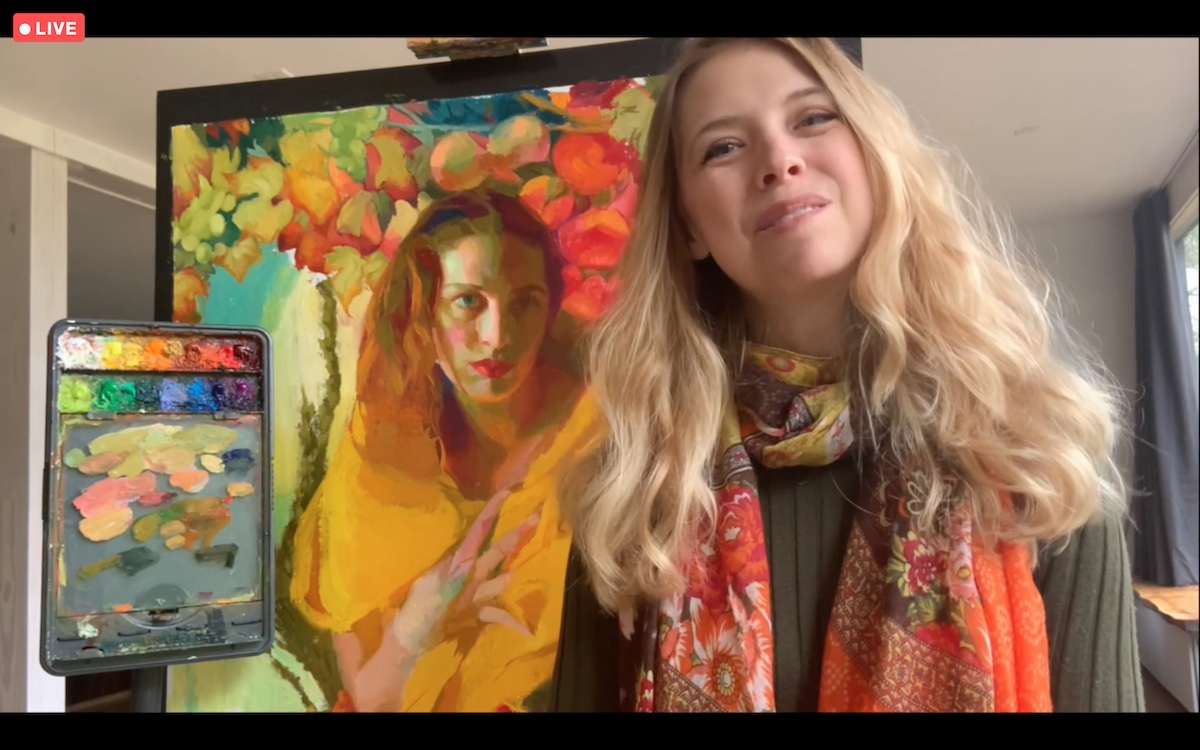
Yesterday’s guests at Savoir Faire were Quang Ho and little Liam, but for today’s demonstration, Pierre Guidetti wanted none other than the talented Adrienne Stein, Ho’s wife, Liam’s mother and a great friend of Pierre Guidetti. For today’s demonstration, Stein showed how to define color-on-color and tone-on-tone transitions using Sennelier oils. Two in particular are her favorites: Chinese Orange, a particular type of color created by Sennelier and Stein’s “signature green”: “Baryte Green”.
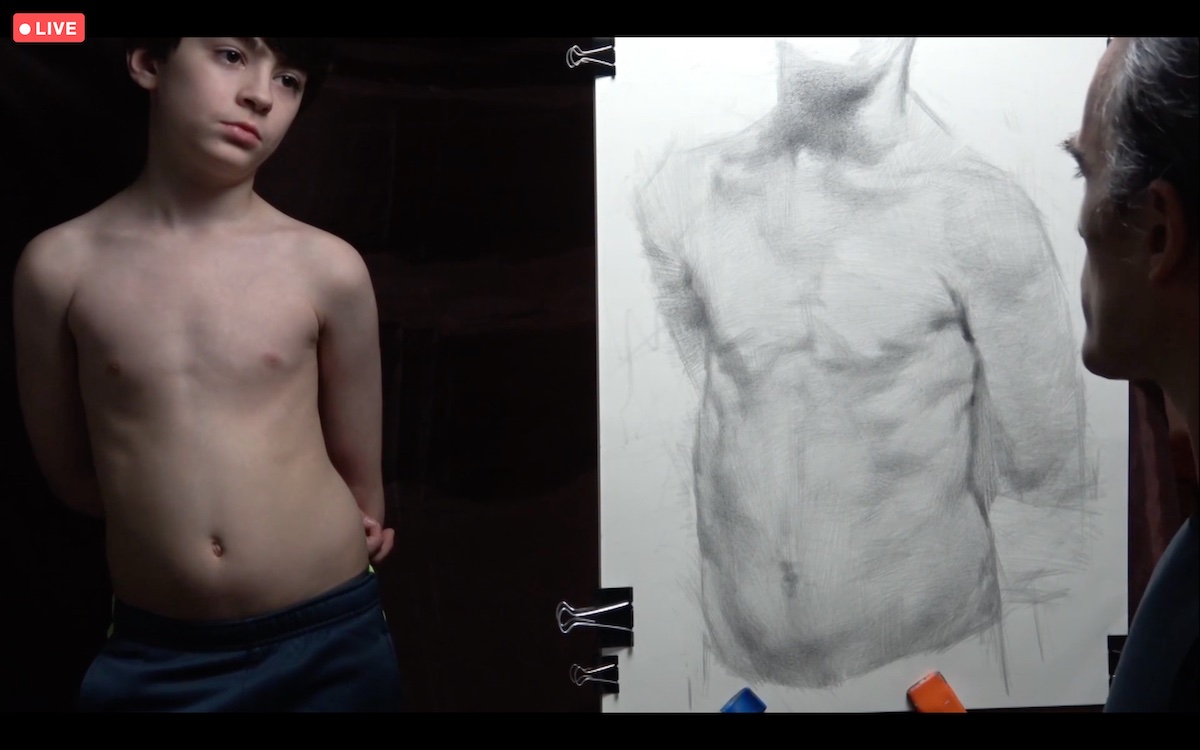
As pointed out by the participants, the words used by Dan Thompson during his lectures are, to say the least, “impressive” and are able to define the degree of sensitivity of this great artist, about which he says: “I want to “evoke” the attention of the viewer, while respecting the individual creative research”.
Dean at the Incamminati Studio in Philadelphia and founder of Grand Central Academy in New York, Dan Thompson has created the torso of a nine-year-old boy with a pencil drawing. In the drawing, the artist states that breathing is everything in the representation of the torso since inhaling and exhaling are the fundamental movements. His masterful anatomical knowledge, combined with the vibrancy of the stroke makes this artist eloquent. In addition to focusing the attention of participants on the three main pillars to keep in mind in the creation of an anatomical drawing – gesture , proportion and fluidity – he highlighted how gesture and hand pressure represent a unique and distinctive “calligraphic” trait, intimate and personal, lush and vibrant.
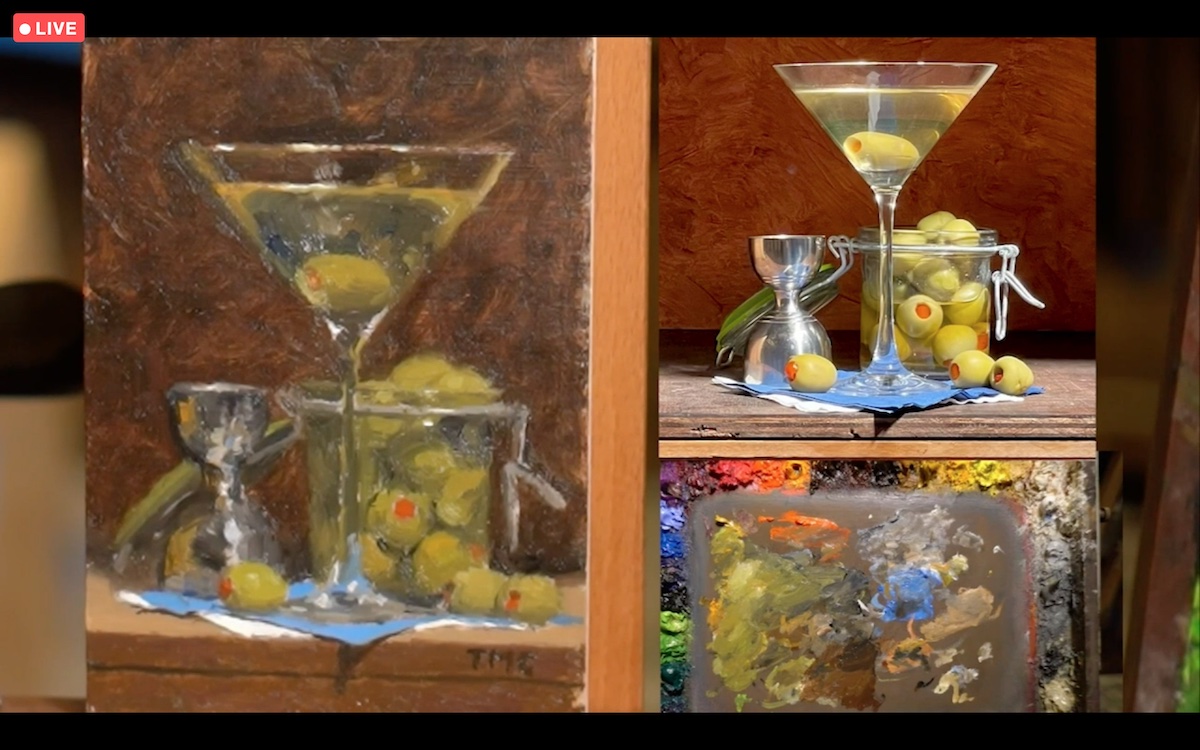
Todd M. Casey’s background in “Communication Design”, undoubtedly helped the artist communicate with his audience effectively. Then the fact that he grew up in an artistic environment like Lowell, MA, did the rest. Lowell is in fact the birthplace – and home of the museum – of James McNeill Whistler. Todd M. Casey, unlike Whistler, has dedicated himself to still life, for which he has been awarded for three consecutive years, winning the “Portrait Society of America Members Only Competition”. For today’s demonstration, T.M. Casey made a “Dirty Martini Cocktail”. During the demo artist focused on the importance of composition, presenting some key concepts contained in his book: “The Art of Still Life: A Contemporary Guide to Classical Techniques, Composition, and Painting in Oil”, a “must have” for lovers of the genre. Although it’s “crazy” to see how T.M. Casey is able to recreate the fluidity of the drink and the transparency and brilliance of the glass, the artist says,” I don’t want to make a rendering of the image but I want to capture the spirit of the composition.”
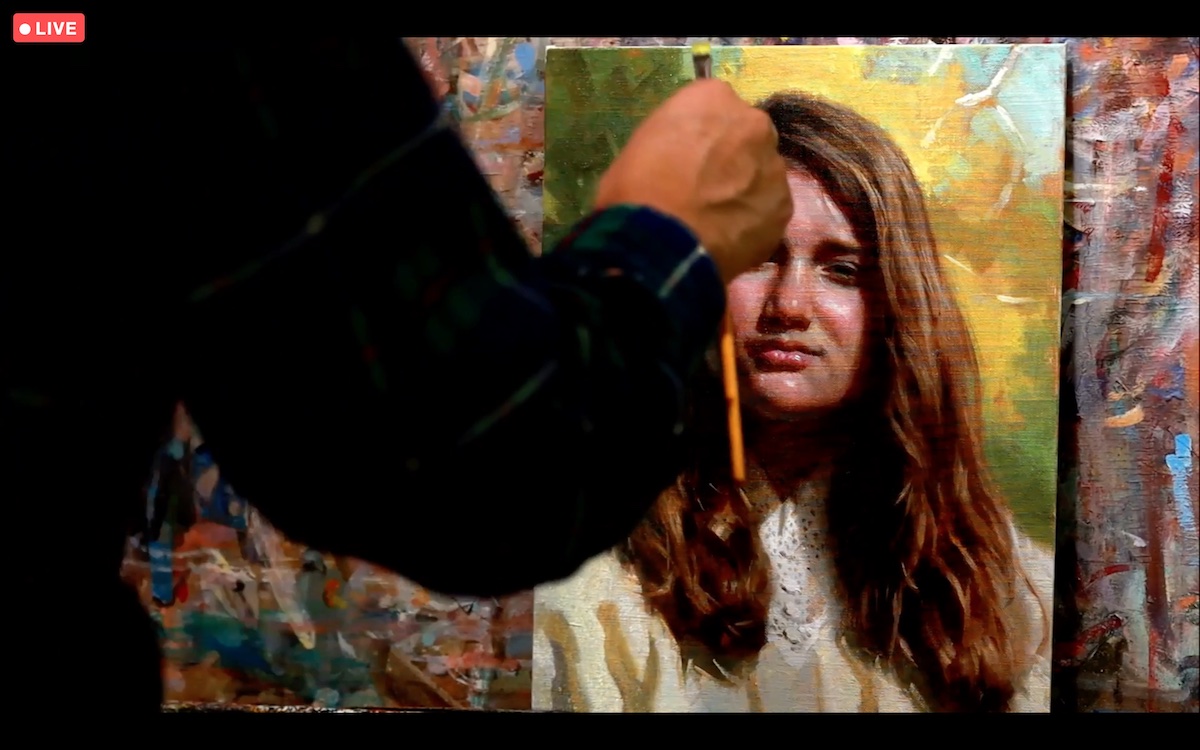
Frank Ordaz in the demo for Blick Art Materials as well as reiterating the importance of details has focused attention on how to make a three-dimensional painting through the use of tricks, tips and of course the appropriate materials to achieve these effects.
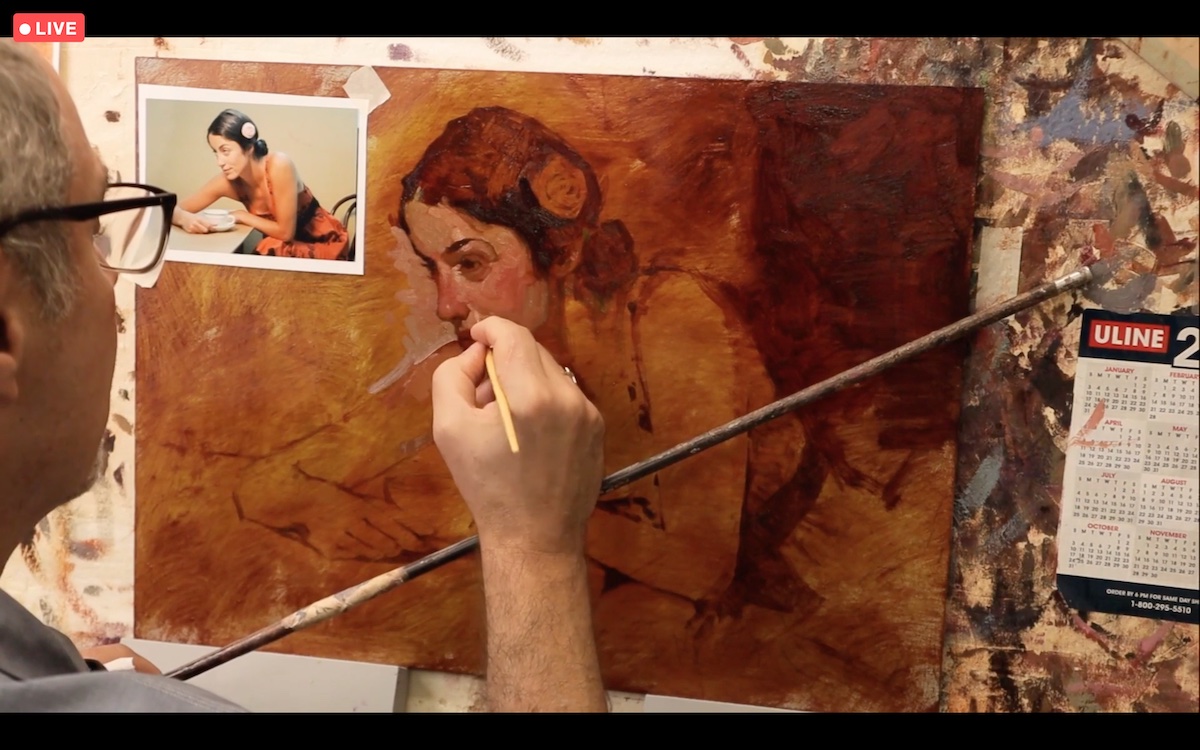
They look like works from another time those of Joseph Lorusso, who for today’s demo explained how the combination of three fundamental factors-drawing, block-in with a grisaille and composition of the color palette-effect his style. An oniric style steeped in spirituality probably due to the use of a predominantly warm palette that tends to reconcile the viewer. Through the study and imitation of some of the greats of the past Lorusso has highlighted how the ability to express the essence of a character is achieved with a few strokes aimed at emphasizing the intuitiveness of painting. During the demonstration, Joseph Lorusso highlighted the need to always feel like a “student” with respect to the artistic process, which must, however, be approached in a “real” way: we tend to have preconceived ideas of what things look like and we try to paint that instead of what we are actually seeing”, said the artist says the artist who admits to having struggled to put this concept into practice, which in fact is what distinguishes a realist painter from others.
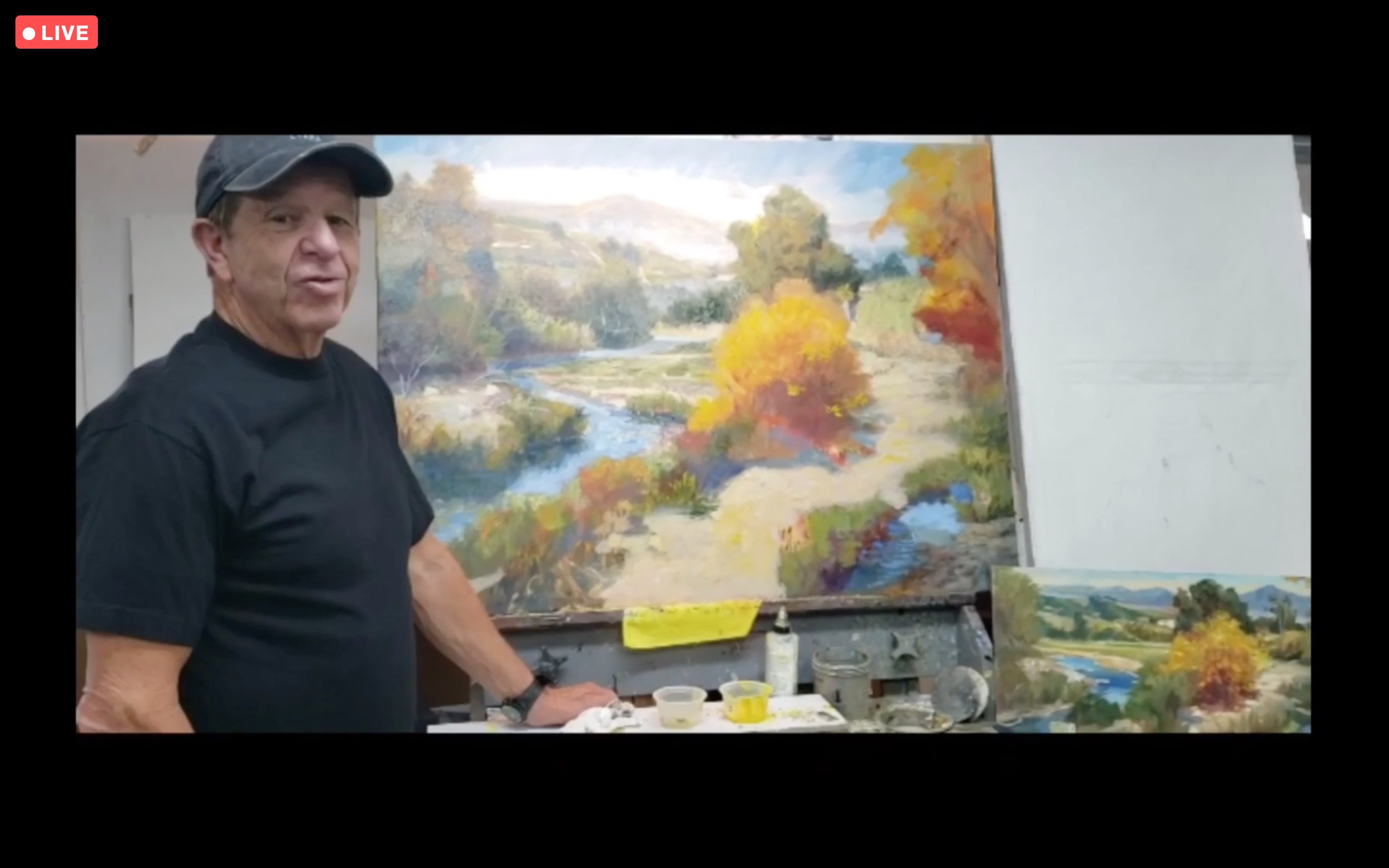
There are those who, by following LPAPA -Laguna Plein Air Painters Association- have managed to realize their dream of living by painting. This has been possible thanks to the commitment that LPAPA employs every day. In fact, the mission of the association, founded in Laguna Beach, CA, in 1996, is to preserve the history of California’s 19th century plein air movement. No matter where you live in the world, join LPAPA and learn more at https://lpapa.org
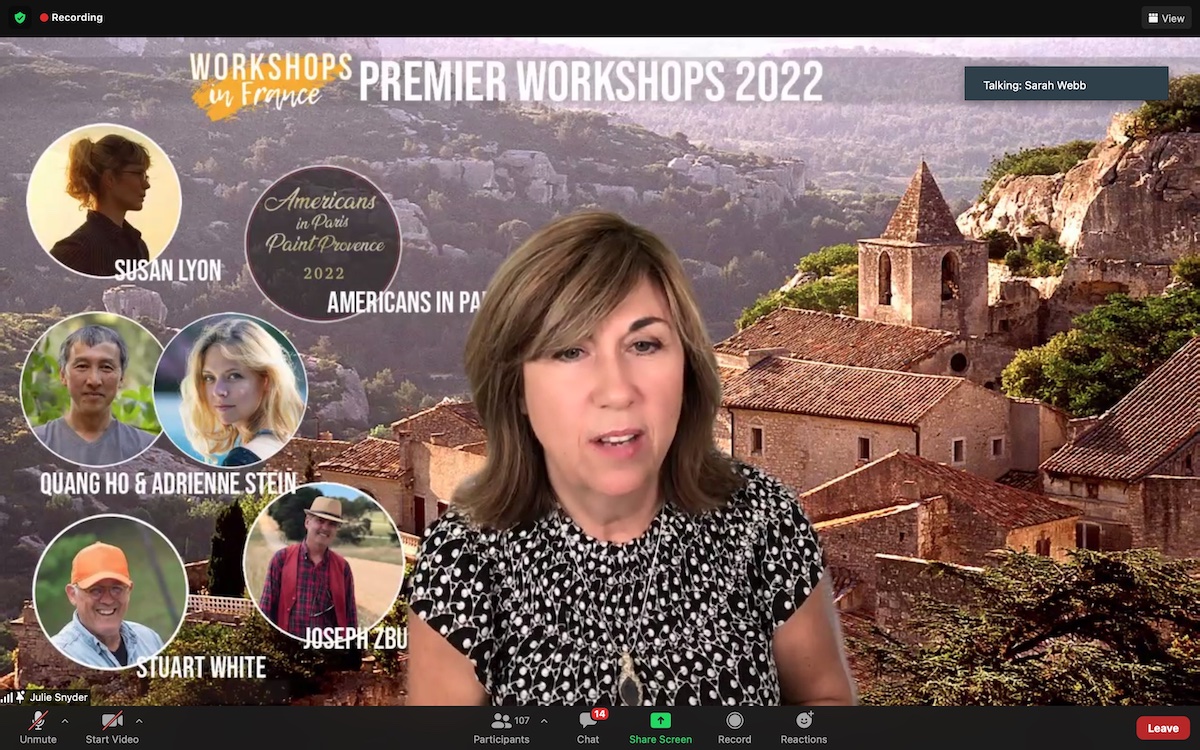
What artist hasn’t dreamed of being able to paint in iconic locations scattered throughout France, Italy or England, under the guidance of an internationally renowned artist like Susan Lyon or Quang Ho? Now all this is possible thanks to “Workshops in France”, the accommodation service for artistic trips in which participants do not have to think of anything but art, culture, relaxation and fun while optimizing costs. For more information and registration please visit the website: https://workshopsinfrance.com
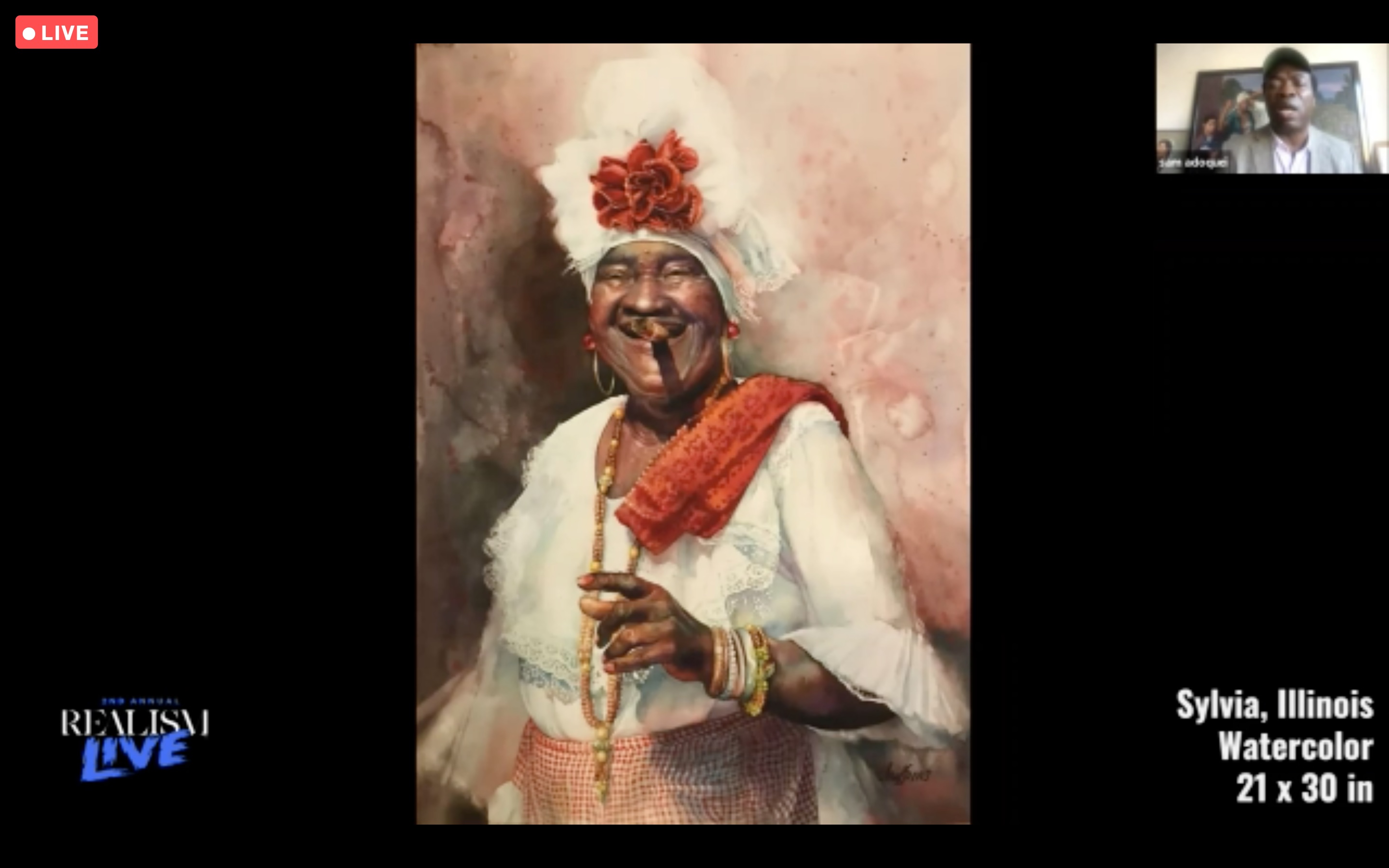
Every self-respecting art seminar has a space dedicated to a critical session by a professional artist. For the occasion of Realism Live the exceptional teacher was Sam Adoquei, member of the board of the Portrait Society of America and winner of many awards including the Medal of Honor in Pomport, France. In addition to the critical session in which Adoquei helped participants focus on different issues, the artist addressed some important concerns that differentiate a professional artist from a beginner, recognizing how an individual’s habit affects in an “essential” way the career of the artist who must never tire of copying the old masters. According to Adoquei, “To secure and honor the artistic legacy, the art lover should be represented by art that provides timeless beauty and continuous inspiration to all, because the great art is founded on love of nature, tradition, innovation and invention”. In other words about Realism, in all its declinations”. Sam Adoquei in collaboration with the Portrait Society of America has founded “‘World Skin Tones Day,” which will be held online, for the first time, on November 20, 2021. For information visit @theskintonesproject ( Instagram) or The Skin Tones Project (Facebook).
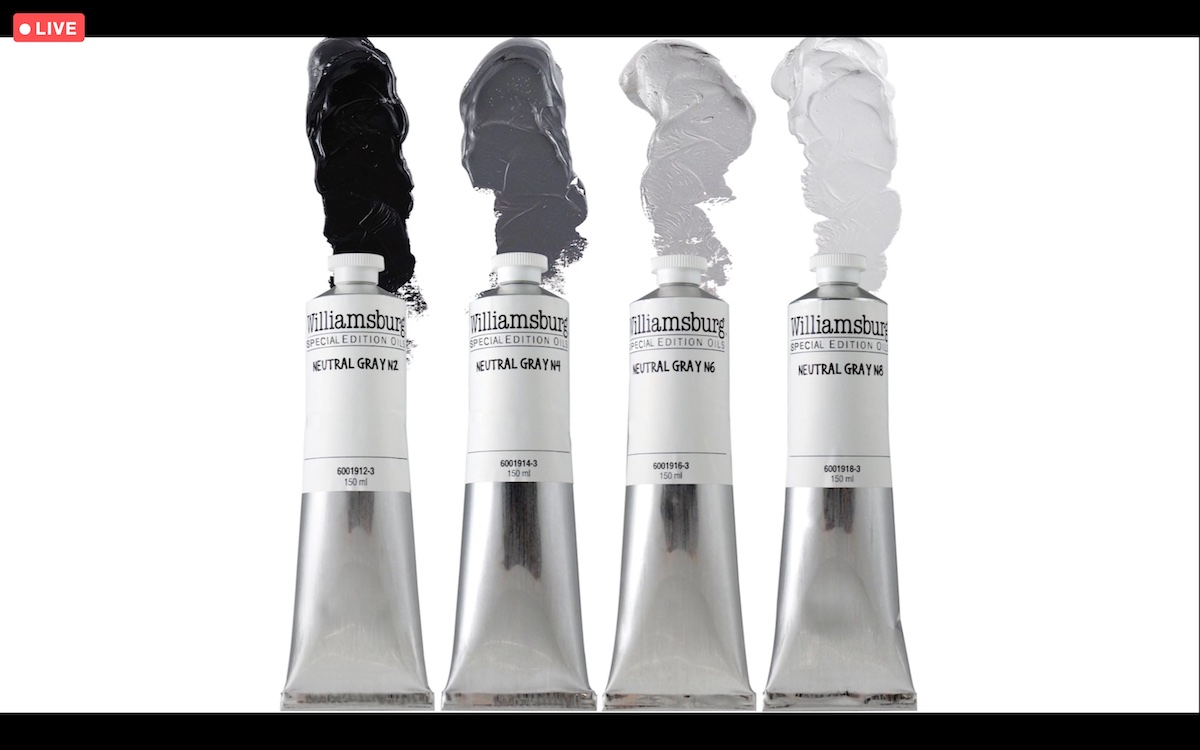
“Underpainting with Neutral Grays” was the theme of Golden Artist Colors’ presentation, which featured the four types of gray produced by Williamsburg and used by artists to bring otherwise too cool blends back toward neutral. The four neutral grays (N2, N4, N6 and N8), which correspond to the values of the Munsell system, are ground in alkaline linseed oil and are based on the combination of Titanium White, Lamp Black and small doses of the various iron oxides (Burnt Umber, Burnt Sienna, Raw Sienna).
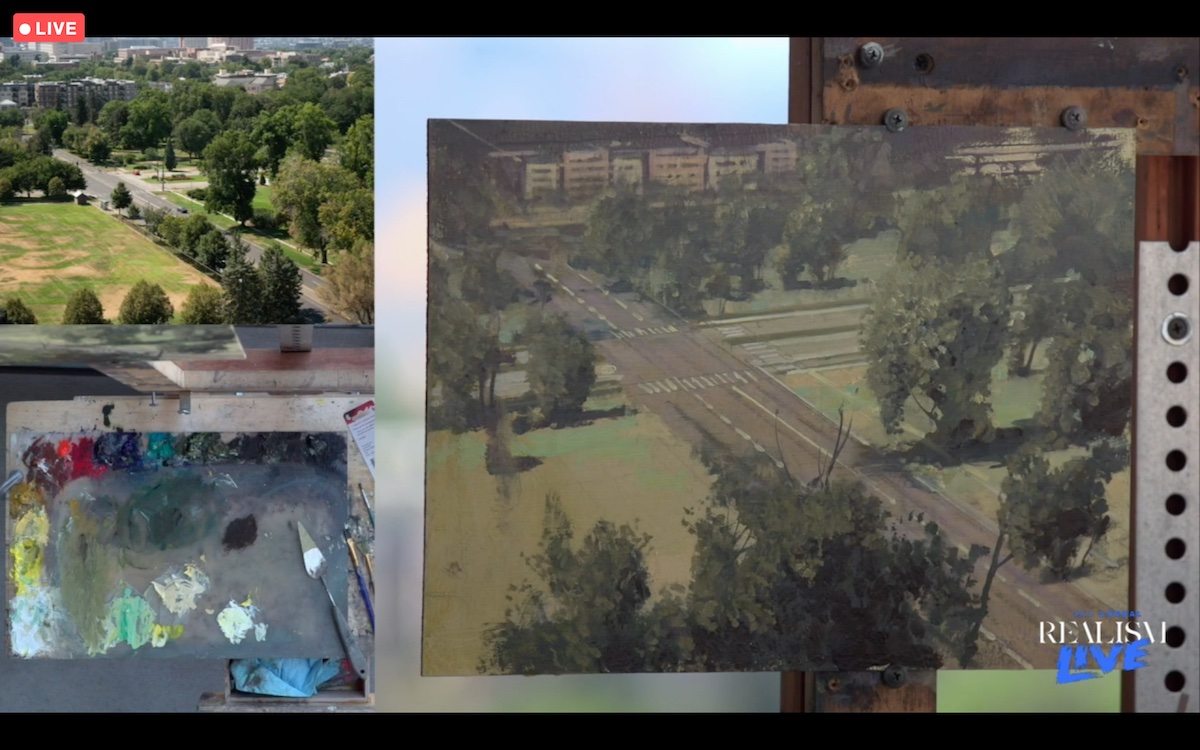
Between demonstrations and presentations about materials and artistic associations the day came to the end. To close in beauty the second day of Realism Live Eric Rhoads presented another superstar: the extraordinary Daniel Sprick, the silent but equally funny artist. Sprick, with his trademark humility and simplicity, addressed a topic that is as salient as it is difficult: the linear two-point perspective. A real worry for many artists but also a fundamental argument to be able to represent the space in a drawing. Moving on to clarify the various basic concepts of perspective, Sprick mentioned its historical hints that date back to antiquity but only came to fruition, with a series of experiments, in the 1400s by Florentine architect Filippo Brunelleschi. Perspective is based on the elementary laws of optics, according to which distant objects appear smaller and less defined than nearby ones. Color is based on this premise. But if ‘aerial’ perspective reproduces the effects of atmosphere and light in relation to increasing distance, ‘linear’ perspective graphically translates the effect of scalar reduction of objects determined by distance.
Two-point perspective, as Sprick makes clear, uses two well-spaced vanishing points on the horizon line. “Have a vanishing point out away from the picture it can help a lot the artist, said Sprick. Fine-tuning the concepts of perspective allows the artist to focus attention on the values and other parameters of color. Sprick’s demo was, as always, a great one about which one participant says: “I love watching him think out loud. He could make anything look amazing”.
It was another day full of concepts, emotions and food for thought that will accompany the participants to tomorrow, for the third and final day of Realism Live.
(on the title: Teresa Oaxaca’s studio)
